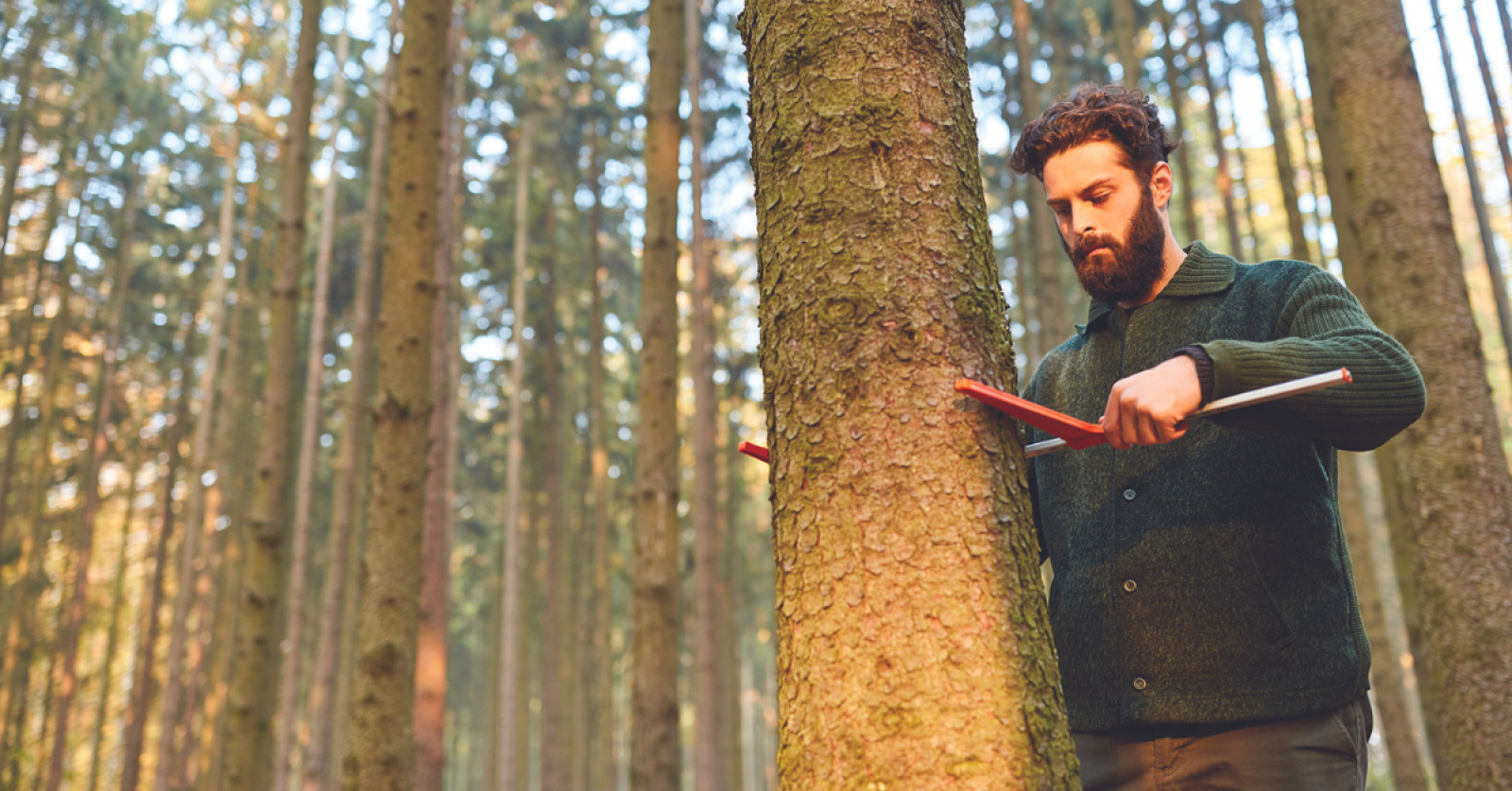March 14, 2024

Utilizing 3D vision for tree nursery caliper measurement
A key aspect of inventory management for tree nurseries is measuring the caliper (or diameter) of each tree. David Weales (MASc), Cole Tarry (MSc), along with Dr. Medhat Moussa (PhD, PEng) from the University of Guelph are developing a way to do this more efficiently and effectively, leveraging real-time kinematic positioning (RTK) GPS technology and advanced AI algorithms.
In tree nurseries, it’s important not only to know how many trees of each caliper and species are available but also to track size from season to season or year to year, ensuring that trees are growing properly and allow managers to make decisions about soil, fertilizer and water needs. One challenge of the time-consuming caliper measurement process, however, is how difficult it is to get consistent measurements in the field. Trees may not be symmetrical around their trunk, so even if two trained workers were to measure the same tree, they may get different measurements depending on the angle and height of where they take the measurement.
Dr. Medhat Moussa and his research team developed a system that provides accurate measurements of tree caliper using cameras and a computer system that can be mounted on the back of a truck, tractor or lawn mower. This allows for measurement in a fraction of the time it takes a nursery worker to perform the task manually. In its final prototype, the system could capture images from a vehicle moving up to five km/h, about the speed of a riding lawnmower. It uses two cameras on opposite sides of the mount in order to capture two rows simultaneously. These cameras capture both colour and depth, which allows the calculation of the caliper measurement. The system also records the precise location using an embedded real-time kinematic positioning (RTK) GPS unit, and uses advanced AI algorithms to accurately measure tree caliper even if there is occlusion or clutter in the way.
The system prototype was tested at two different nurseries while driving an average of three km/h through the rows, which allowed imaging of 3,000 trees per hour. Multiple images were collected per tree to enhance accuracy. The test demonstrated that image processing and extraction of tree caliper can currently be completed at a rate of 1,000 trees/hour. The current system accuracy was evaluated to be +/- 1 caliper group from a ground truth human measurement in 88.5 per cent of the cases, which is similar to the human-to-human comparison. Improving the accuracy is possible with simple steps, like using poles with distinct colour and ensuring plant or cover crop growth near the base of the tree is kept to a minimum so that the camera has a completely unobstructed view of the area where the measurement will be taken.
In the future, nurseries have also expressed interest in using this system to determine the grade and species of each tree. Tree grading is more difficult than caliper measurement as it is more of a subjective metric, but with assistance from growers, it could be possible to use the system’s AI models to learn tree grading. RFID tags can also be used to label groups of trees by species.